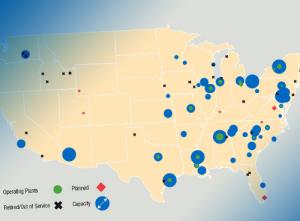Efficient, Clean
Earl Simpkins is a Partner at PwC Strategy&’s Energy Practice and over the course of his thirty-plus year career, has served utilities, energy, and industrial companies in topics related to strategy, operations, deals, performance improvement, capital management, performance management, customer strategy and operations, shared services, and other topics.
Tech giants Google, Microsoft, and Meta sent a bolt of uranium-enriched adrenaline through the energy industry by announcing plans to power data centers with nuclear energy. Why the sudden shift to nuclear?

After decades of stagnation, U.S. energy consumption is surging faster than reliable energy sources can deliver. Over the next decade, demand is expected to rise by as much as fifteen to twenty percent. See Figure 1.
Expanding data centers, driven by the rapid rise of artificial intelligence, will account for a huge portion of that growth. By 2030, these power-intensive facilities are forecasted to consume nearly ten percent of total U.S. electricity generation – double the 2023 figure.
Additional demand stems from reshoring manufacturing, building electrification, and electric vehicle adoption. These trends highlight the need for reliable, scalable power sources to support economic growth and technological progress. While a diversified energy portfolio remains essential, nuclear power is emerging as a leading contender to meet this challenge.
Nuclear has been key to the U.S. energy mix since 1957, growing steadily until the 1980s when negative perception, cost overruns, and project delays stalled progress. See Figure 2.

